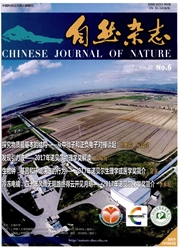

 中文摘要:
中文摘要:
巴丹吉林沙漠东南部边缘巴丹海子全新世大暖期6-9kaBP的湖相沉积中含有大量腹足类化石——Radix cucunorica (Moellendorff), Succinea erythrophana Ancey, Gyraulus sibricus (Dunker), Radix lagotis (Schranck), Gyraulus albus(Miiller), Lymnaea stagnalis(Linnaeus),Gyraulus convexiusculus (HuRon),除Succinea erythrophana Ancey属陆生蜗牛外,余皆为淡水腹足类。这些化石代表了当时温暖湿润的气候环境。其中,现生的Gyraulus convexiusculus (Hutton)生活的最NW位置为地处暖温带的南泥湾,据此推知,6-9kaBP时的巴丹海子的气温和降水至少较今分别高出1.1℃和440mnl;从南泥湾至巴丹海子,气候带向NW移动了差不多700km;那时夏季风暖锋位置可向NW移动到从玉门其以NE走向至额济纳旗及其以北的中蒙国界一线,夏季风的波及范围可以漂越甘新交界的深居内陆的星星峡。
 英文摘要:
英文摘要:
The lacustrine sediment contains a great amount of gasteropod fossils of the Holocene Megathermal (6-9 ka BP) of the Badanhaizi Lower Land located at southeastern margin of Badainjaran Desert, China. These are Radix cucunorica (Moellendorff), Succinea erythrophana Ancey, Gyraulus sibricus (Dunker), Radix lagotis (Schranck), Gyraulus albus(Muller), Lymnaea stagnalis(Linnaeus),Gyraulus convexiusculus (Hutton), in which, except terraneous Succinea erythrophana Ancey, the rest belongs to freshwater gasteropods. They indicate then warm-humid climate, among which the existent northwesternmost of the extant Gyraulus convexiusculus (Hutton) is of Nanniwan of Shanxi Province of Chinese warm temperate belt. Hence, it is assumed that during 6-9 ka B. P. the annual average temperature and precipitation of Badanhaizi probably were respectively 1.1 ℃ and 440 mm higher than those of the present-day; from Nanniwan to Badanhaizi, the climate belt almost migrated northwestward 700 kin; the warm front of summer monsoon may moved to northwestward the range from Yumen to Ejin Qi in NE strike and further to the Sino-Mongolia boundary at that time, and its influencing extension probably attained to Xingxingxia, the inner continent, of the boundary between Gansu and Xinjiang, China.
 同期刊论文项目
同期刊论文项目
 同项目期刊论文
同项目期刊论文
 期刊信息
期刊信息
